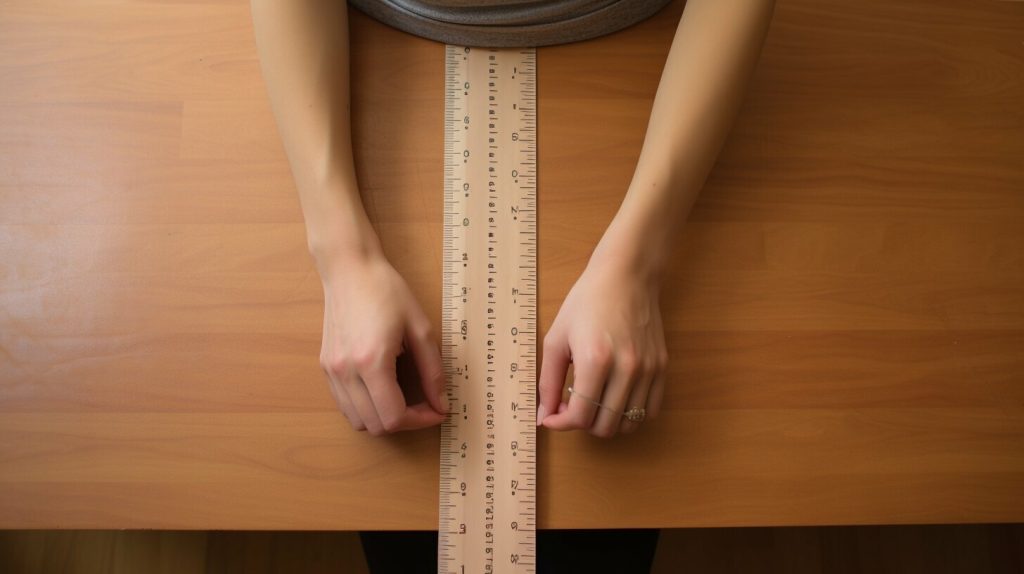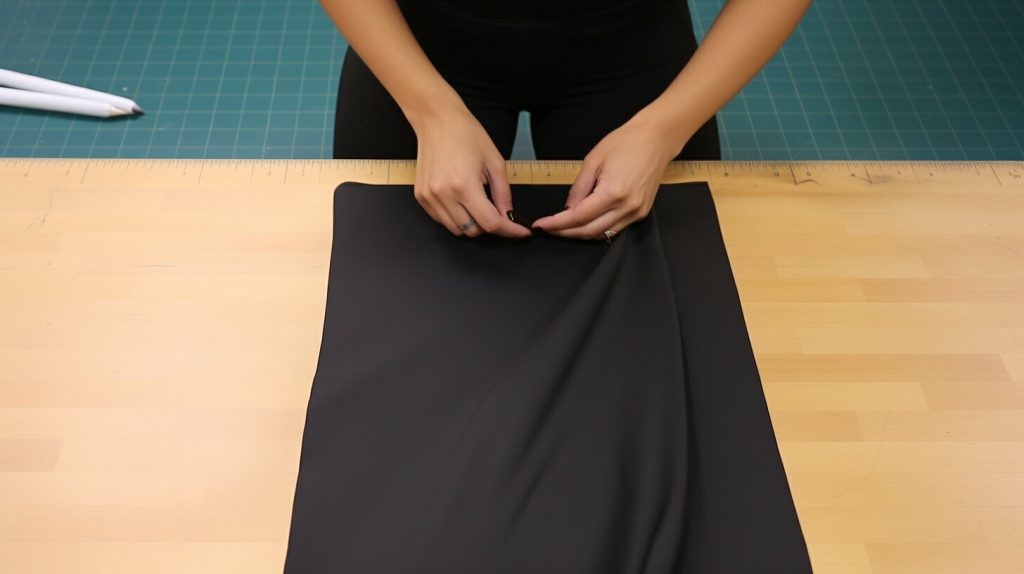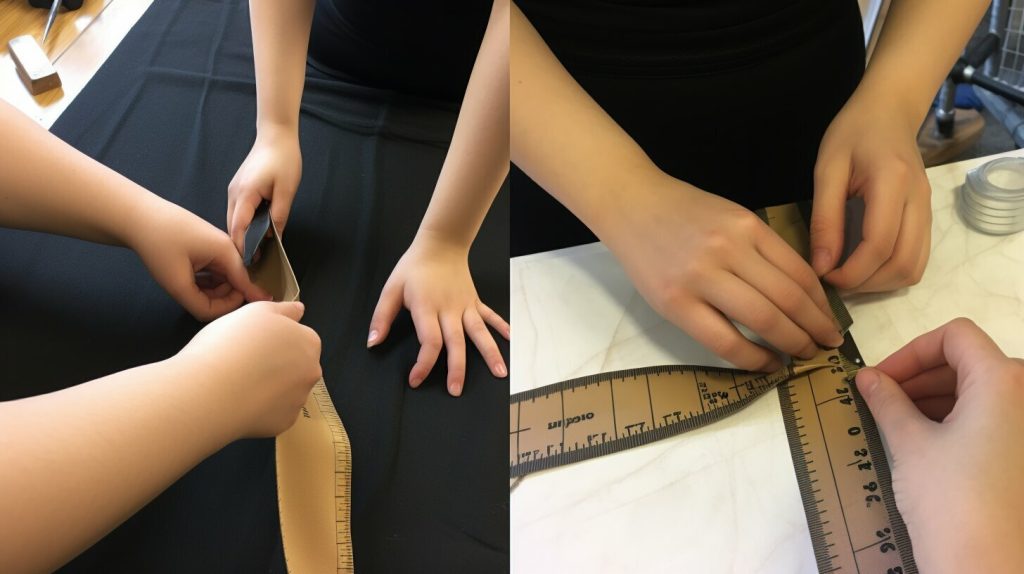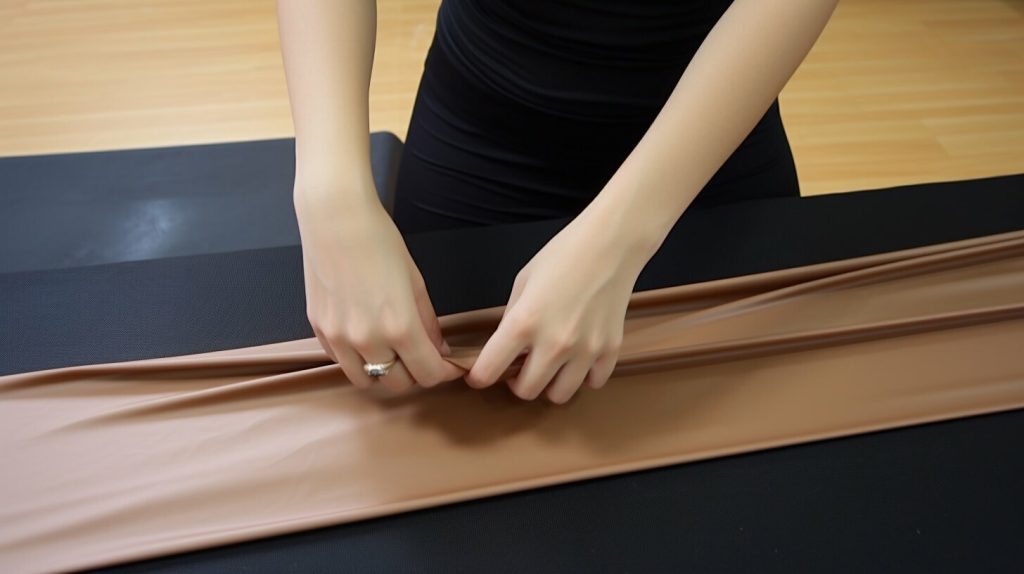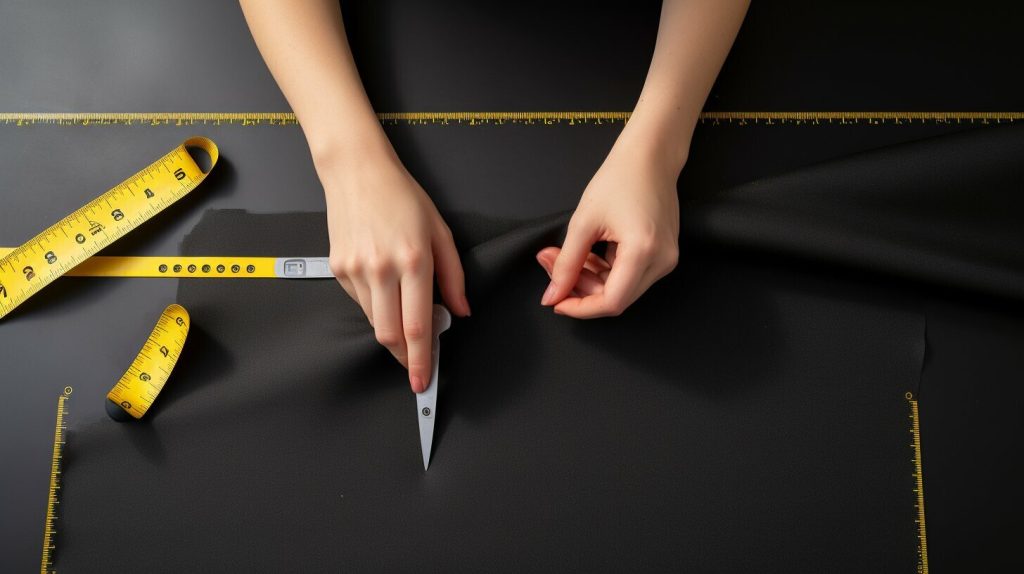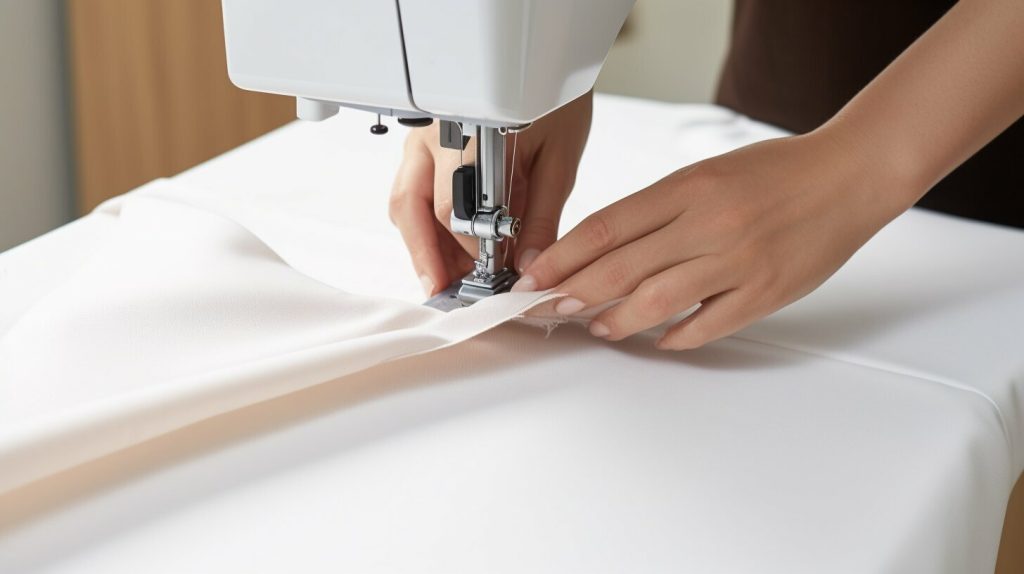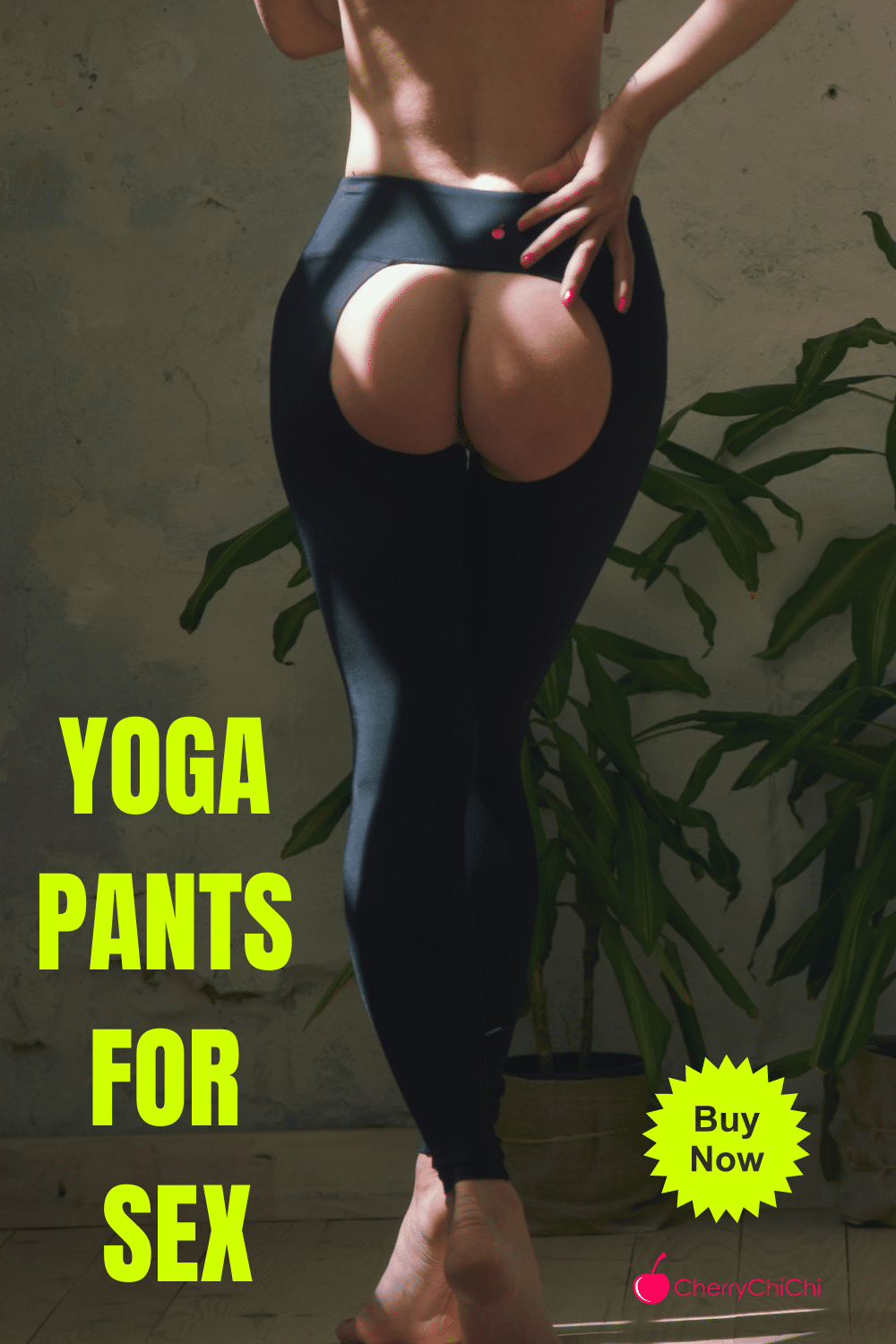
Are you tired of your leggings being too short? Don’t worry, I’ll show you how to make them longer with this easy-to-follow guide.
Factual data: This easy guide on how to make leggings longer provides step-by-step instructions on how to extend the length of leggings. The first source includes information on choosing the right fabric, creating a pattern, cutting and sewing the fabric, and adding the waistband and hem. The second source emphasizes the importance of choosing stretchy fabric and provides detailed instructions on creating a pattern and sewing the leggings. The third source addresses common fitting issues and provides solutions for adjusting the pattern to ensure a proper fit. Overall, these sources offer comprehensive guidance for making leggings longer in a simple and straightforward manner.
- Follow this step-by-step guide to make your leggings longer
- Choose the right fabric and ensure it’s stretchy for comfort
- Create a pattern and adjust it for a proper fit
- Cut and sew the fabric onto your leggings
- Add a waistband and hem for a finished look
With these tips and techniques, you’ll be able to transform your too-short leggings into the perfect length. Say goodbye to uncomfortable ankles and hello to leggings that fit just right!
Choosing the Right Fabric
Before you start altering your leggings, it’s important to choose the right fabric that will seamlessly blend with the existing material. Opt for a fabric that has similar stretch and weight to ensure a harmonious fit and appearance. Look for fabrics such as cotton jersey, ponte knit, or spandex blends, which offer good elasticity and durability. Avoid fabrics that are too thin or stiff, as they may not provide the desired effect.
When selecting fabric, consider the color and pattern as well. If your leggings are solid-colored, try to find a fabric that matches or complements the existing color. If your leggings have a pattern, choose a fabric that mimics the pattern or contrasts in an appealing way. This will help ensure a cohesive look once you’ve extended the length of your leggings.
Table 1: Fabric Options for Lengthening Leggings
| Fabric Type | Properties | Recommended For |
|---|---|---|
| Cotton Jersey | Soft, stretchy, and breathable | Everyday leggings |
| Ponte Knit | Thicker and more structured | Colder weather leggings |
| Spandex Blends | Highly stretchy and form-fitting | Active or sporty leggings |
Remember to wash and dry your chosen fabric according to its care instructions before starting the lengthening process. This will ensure that the fabric won’t shrink or change its properties after you’ve sewn it onto your leggings. By choosing the right fabric and treating it properly, you’ll be one step closer to achieving the desired length for your leggings.
“Choosing the right fabric is crucial for a successful legging lengthening project. It’s not just about the stretch and weight; you also need to consider the color and pattern. By selecting the appropriate fabric, you can seamlessly blend the added length with the original leggings, creating a cohesive and stylish look.” – Lena, DIY Fashion Enthusiast
Creating a Pattern
To ensure a professional-looking result, you’ll need to create a pattern that matches your leggings’ original design. This will help you extend the length seamlessly and maintain a consistent fit. Here’s a step-by-step guide on how to create a pattern for lengthening your leggings:
- Begin by laying your leggings flat on a piece of paper. Make sure the leggings are smooth and free from any wrinkles or folds.
- Trace the outline of your leggings onto the paper using a pencil or pen. Be as precise as possible, capturing all the curves and contours of the original design.
- Next, determine how much length you want to add to your leggings. Measure and mark this additional length on the paper pattern, extending it from the hemline downwards.
- Using a ruler, connect the marked points to create a smooth and even line. This will be your new hemline.
- Review the pattern to ensure it matches your desired length. Make any necessary adjustments or refinements before proceeding.
Once you have created your pattern, you can use it as a guide for cutting and sewing the fabric to extend the length of your leggings. Having an accurate pattern will help you achieve the best possible result and ensure that your lengthened leggings fit comfortably and look stylish.
Now that you have your pattern ready, it’s time to move on to the next step: cutting and sewing the fabric. This process requires careful attention to detail and precision to achieve a flawless finish. Stay tuned for the next section, where we will walk you through the cutting and sewing process to make your leggings longer!
Cutting and Sewing the Fabric
Once you have your pattern ready, it’s time to cut the fabric and start sewing it onto your leggings. This step requires precision and attention to detail to ensure a flawless result. Here are the techniques and hacks you need to know for longer leggings:
- Prepare the fabric: Lay out your selected fabric flat and smooth, ensuring there are no wrinkles or folds. This will help you cut accurate pieces and prevent any distortions in the final product.
- Pin the pattern: Place your pattern on the fabric and secure it with sewing pins. Make sure it is aligned properly and the grain line matches the direction of stretch in your fabric. This will ensure a comfortable fit.
- Cut with precision: Using sharp fabric scissors, carefully cut along the edges of your pattern. Take your time and stay close to the lines to achieve a clean and professional finish.
- Join the pieces: Once the fabric pieces are cut, it’s time to sew them together. Use a sewing machine or hand-stitching techniques to join the front and back pieces, following the instructions provided in your pattern.
- Finishing touches: After sewing the fabric, trim any excess threads and check for any loose stitches. Press the seams flat with an iron to create a neat and polished look.
Additional Tips:
For a professional touch, consider using a serger or overlock machine to finish the raw edges of your fabric. This will prevent fraying and add durability to your lengthened leggings.
Remember to take accurate measurements and double-check them before cutting your fabric. This will ensure an optimal fit and avoid any fitting issues later on.
By following these techniques and hacks, you can easily make your leggings longer and customize them to your desired length.
| Technique | Hack |
|---|---|
| Pin the pattern | Use extra-large pins for easier handling and better fabric grip. |
| Cut with precision | Mark the cutting lines with a fabric marker or chalk to ensure accuracy. |
| Join the pieces | Use a stretch stitch or a small zigzag stitch to allow flexibility in the seams. |
| Finishing touches | Consider adding a decorative topstitch along the seams for a stylish touch. |
With these techniques and hacks, you’ll be able to confidently cut and sew the fabric to create longer leggings that fit perfectly and enhance your style.
Adding the Waistband and Hem
To ensure a comfortable fit and a polished look, it’s important to properly add a waistband and hem to your extended leggings. This final step will give your leggings a professional finish and ensure that they stay in place while you wear them.
Start by measuring the circumference of your waist and adding a few inches to account for the stretch in the fabric. Cut a strip of elastic that matches this length and is about 1 inch wide. Sew the ends of the elastic together to form a loop.
Next, fold the top edge of your leggings over the elastic and pin it in place. Use a zigzag stitch to sew the folded edge down, stretching the elastic gently as you sew. This will create a secure and comfortable waistband that will hold your leggings up without digging into your skin.
For the hem, try on your leggings and mark where you want the desired length to be. Fold the fabric up to this point and pin it in place. Use a zigzag stitch to sew the hem, ensuring that it is neat and secure.
| Tip: | For a clean finish, consider using a twin needle when sewing the waistband and hem. This will create parallel lines of stitching that will give your leggings a professional look. |
|---|---|
| Quote: |
|
If you want your leggings to maintain their stretch and flexibility even after being extended, it’s crucial to choose a fabric with good elasticity. The right fabric will ensure that your lengthened leggings fit comfortably and move with your body. Here are some key factors to consider when selecting stretchy fabric for your project:
- Look for fabrics that contain elastane or spandex. These fibers provide excellent stretch and recovery, allowing your leggings to retain their shape even after being extended.
- Consider the weight of the fabric. Lightweight and medium-weight fabrics are generally more suitable for leggings, as they offer a good balance between comfort and durability.
- Check the fabric’s composition. Fabrics with a high percentage of natural fibers, such as cotton or bamboo, can offer breathability and moisture-wicking properties, enhancing the overall comfort of your lengthened leggings.
- Take into account the fabric’s stretch percentage. Look for fabrics that offer at least 20% to 30% stretch. This will ensure that your leggings have enough give to accommodate the extension without becoming too tight.
By choosing the right stretchy fabric, you’ll not only make your leggings longer, but also ensure that they remain comfortable and functional. Remember to test the fabric’s stretch before starting your project to ensure it meets your requirements.
| Fabric | Elasticity | Weight | Composition | Stretch Percentage |
|---|---|---|---|---|
| Cotton-Spandex Blend | High | Medium | Cotton: 95%, Spandex: 5% | 30% |
| Nylon-Spandex Blend | High | Lightweight | Nylon: 80%, Spandex: 20% | 40% |
| Bamboo-Spandex Blend | Medium | Lightweight | Bamboo: 95%, Spandex: 5% | 25% |
Table: A comparison of different stretchy fabric options for lengthening leggings. These fabrics offer varying levels of elasticity, weight, composition, and stretch percentage, allowing you to choose the one that best suits your needs.
Adjusting the Pattern for a Proper Fit
Sometimes, simply adding length to your leggings isn’t enough to achieve the perfect fit. Here’s how you can adjust the pattern to ensure your leggings fit you flawlessly.
One technique is to taper the pattern at the waist and hips for a more tailored look. This can be done by gradually narrowing the pattern as you move from the waist to the hips. By doing so, you create a flattering silhouette that hugs your curves without feeling too tight.
Another adjustment you can make is to add or remove width at the waistband. If your leggings feel too tight around the waist, you can widen the waistband slightly by adding extra fabric in that area. Conversely, if the waistband feels loose, you can take it in by trimming away some fabric.
Lastly, don’t be afraid to experiment with different rises. The rise refers to the distance between the crotch seam and the waistband. Some people prefer a higher rise for extra coverage and support, while others prefer a lower rise for a more relaxed fit. Play around with different rise options to find what works best for you.
| Adjustment | Description |
|---|---|
| Tapering | Narrow the pattern from waist to hips for a more tailored look. |
| Waistband Width | Add or remove fabric at the waistband to adjust the fit. |
| Rise | Experiment with different rises to find the most comfortable fit. |
Remember, adjusting the pattern may take some trial and error. Don’t be discouraged if it doesn’t come out perfect on your first try. Take your time, make small adjustments, and keep refining until you achieve the fit you desire. With these tips and techniques, you can confidently create leggings that not only look great but also feel amazing to wear.
- Taper the pattern at the waist and hips for a more tailored look
- Add or remove width at the waistband to adjust the fit
- Experiment with different rises to find the most comfortable fit
“Adjusting the pattern may take some trial and error. Don’t be discouraged if it doesn’t come out perfect on your first try. Take your time, make small adjustments, and keep refining until you achieve the fit you desire.”
By following these tips and techniques, you can ensure that your leggings not only look great but also provide the perfect fit for your body. So go ahead and unleash your creativity, make your leggings longer, and customize them to suit your unique style and preferences.
Source 1: Extending Leggings with a Pattern
In this source, you’ll find detailed instructions and tips on how to extend the length of your leggings using a pattern. Whether you want to transform your favorite pair of leggings that are too short or customize a new pair, this guide will walk you through the process step by step.
First, it’s essential to choose the right fabric for your project. Look for stretchy materials that match the original leggings or complement them well. This will ensure that the extended portion blends seamlessly with the rest of the garment.
To create a pattern, you’ll need some basic supplies like pattern paper, scissors, and a measuring tape. Measure the desired length you want to add to your leggings and mark it on the pattern paper. Use a ruler to draw a straight line parallel to the bottom edge of your leggings. This line will serve as the guideline for cutting and sewing the fabric.
After creating the pattern, it’s time to cut and sew the fabric to extend the length of your leggings. Place the pattern on the fabric, ensuring that the stretch aligns in the same direction as the original leggings. Cut along the marked line, leaving a small seam allowance. Use a stretch stitch or a zigzag stitch to sew the fabric onto the leggings, following the marked line. Trim any excess fabric and finish the raw edges with an overlocker or a zigzag stitch.
| Pros | Cons |
|---|---|
| Easy and affordable way to make leggings longer | Requires basic sewing skills |
| Customizable to fit your desired length | May alter the fit of the leggings |
| No need to buy new leggings | May not work well with all fabric types |
Remember to try on the leggings throughout the process to ensure the fit is to your liking. It’s better to make adjustments as you go rather than ending up with leggings that are too long or too short. Once you’re satisfied with the length, finish off by adding a waistband and hem to complete your lengthened leggings.
Source 2: Sewing Your Own Leggings
If you’re up for a more ambitious project, this source will guide you through the process of sewing your own leggings and customizing the length to your liking. By following these DIY leggings lengthening methods, you can transform your existing leggings into the perfect fit for any occasion.
First, choose a stretchy fabric that matches the color and texture of your leggings. This will ensure a seamless blend when you extend the length. Cut out a pattern using your existing leggings as a guide, adding extra length based on your desired outcome. Remember to leave a seam allowance for sewing.
Next, sew the fabric together along the lengthened pattern, making sure to create a neat and secure seam. For added durability, consider using a zigzag stitch or a serger. Once the fabric is attached, finish the edges by folding over and sewing a hemline. This will prevent fraying and give your lengthened leggings a professional finish.
To complete the look, add a waistband that matches your leggings. This can be made from the same fabric or a complementary color. Simply measure the width of your waist and cut a strip of fabric accordingly. Attach the waistband to the top of the leggings, ensuring it is secure and comfortable to wear.
With these DIY techniques to make leggings longer, you can easily transform your wardrobe. Whether you’re looking to add a few inches or completely overhaul the length, sewing your own leggings allows you to customize the fit to your liking. By following the step-by-step instructions provided, you’ll have a new pair of lengthened leggings that are both stylish and comfortable.
| Benefits of Sewing Your Own Leggings | Additional Tips and Tricks |
|---|---|
|
|
Conclusion
By following this easy guide, you now have the knowledge and techniques to transform your too-short leggings into perfectly fitting and stylish pieces. The first source mentioned offers comprehensive information on choosing the right fabric, creating a pattern, and cutting and sewing the fabric to extend your leggings. Additionally, it provides guidance on adding the waistband and hem for a polished finish.
If you prefer to start from scratch, the second source is a great option. It emphasizes the importance of using stretchy fabric when lengthening leggings and provides detailed instructions on creating a pattern and sewing the leggings. This source is especially useful for those who want to customize their leggings and have complete control over the fit and style.
Lastly, the third source addresses common fitting issues that may arise during the lengthening process. It offers practical solutions for adjusting the pattern to ensure a proper fit. With these three sources at your disposal, you have all the information you need to confidently extend the length of your leggings.
Now, it’s time to unleash your DIY skills and get creative. With a little time and effort, you can transform your too-short leggings into fashionable and comfortable garments that you’ll love to wear. Happy lengthening!
FAQ
Q: Can I make my leggings longer without sewing?
A: While sewing is the most effective method for lengthening leggings, there are alternative options available, such as adding a fabric panel or using fabric glue, but they may not provide the same level of durability.
Q: What type of fabric should I choose to make my leggings longer?
A: It’s recommended to choose a fabric that matches the stretchiness and weight of your leggings, such as jersey knit or spandex blends. This ensures a seamless integration and optimal comfort.
Q: How can I adjust the pattern to fit my measurements?
A: You can adjust the pattern by adding or subtracting length at specific areas, such as the legs or waistband, based on your individual measurements. This ensures a proper fit and avoids any tightness or sagging.
Q: Can I use this guide for leggings of any size?
A: Yes, this guide can be used for leggings of any size. The principles and techniques described can be applied to leggings of various lengths, from ankle-length to full-length.


